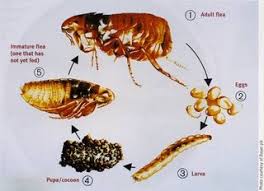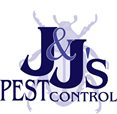PEST INFORMATION ABOUT FLEAS

Fleas are a type of wingless parasite found worldwide. They feed off the blood of humans and animals such as dogs and cats. Since fleas use a wide range of hosts, diseases can be transferred from one host to another. Fleas are known to transmit tapeworm larvae and, uncommonly, the disease murine typhus. They are most notorious for transmitting bubonic plague from wild rodents to humans in certain parts of the world (not Australia).
There are three main species of flea that infest humans:
- Cat flea (Ctenocephalides felis)
- Dog flea (Ctenocephalides canis)
- Human flea (Pulex irritans).
The cat and dog flea are common in Australia. A flea bite is intensely itchy and secondary infections caused by scratching are common.
| Symptoms of a flea bite The bite of a flea has certain features:It is extremely itchy.A red, swollen wheal develops within half an hour of the bite.After a day or so, the wheal (lump) may develop into a blister or small wound.The legs and feet are often targeted.Secondary infections caused by scratching are common.Some people may become hypersensitive (very sensitive) to bites.Physical characteristics of the flea A flea:Is wingless, oval shaped and around 2 to 8mm longIs light to deep brown in colourHas a disproportionately small headHas six legsHas large hind legs that enable them to jump long distances.Blood feeding Adult fleas can survive for some months without feeding. The flea uses its saw-like mandibles (jaws) to cut through skin, usually on accessible parts of the body such as the legs or feet. Flea saliva contains anticoagulants to encourage the blood to keep flowing. Female fleas are prompted to lay their eggs after feeding. The eggs are light coloured and oval shaped. The larvae cocoon themselves within weeks of hatching. Vibration, such as footsteps, prompts adult fleas to emerge from their cocoons. This is why you may be bitten after entering a house that has been unoccupied for some time. Household pets Dogs and cats are common ‘reservoirs’ for fleas. Your pet may be irritated by flea bites and scratch often. Check for fleas by parting the fur, particularly around the ears and rump. Look for the fleas themselves or for flea faeces (poo). Flea faeces look like miniscule dark specks. For a positive identification, place a few of the specks on a piece of lightly moistened white tissue. Flea faeces will leech a ring of blood into the tissue. Treatment Suggestions to treat flea bites include:Resist the urge to scratch.Wash the bites with antiseptic soap to reduce the risk of infection.Apply an icepack frequently to help relieve swelling.Use calamine lotion, anaesthetic creams or similar to treat the itching.See your pharmacist for advice on appropriate antihistamine medications to reduce the swelling.Seek treatment for possible tapeworm infection, since fleas can transmit this parasite through their bite.See your doctor if the symptoms worsen or if a secondary infection develops (indicated by discharge of pus from wounds). |
PEST CONTROL FOR FLEAS
Treating your pet
Infested animals should be treated fortnightly for several weeks. Suggestions on treating your pet include:
- See your veterinarian for a range of appropriate flea-killing products.
- Treatment options include tablets to be swallowed by the animal, and solutions or powders to be applied to their fur.
- Treat your pet for tapeworm, since fleas can transmit this parasite through their bite.
Treating your house
Your local council can offer information and advice on dealing with a flea infestation. Some general suggestions on eliminating fleas yourself include:
- Clean animal bedding and the general surrounds thoroughly.
- Vacuum the carpets. Throw away the vacuum cleaner bag, since it will contain fleas and eggs, or use a surface spray into the bag.
- Use an appropriate spray or ‘flea bomb’ in your house, taking care to follow the label directions carefully.
- Treat outdoor areas commonly used by your pet, such as kennels, with appropriate insecticides, wearing gloves and long-sleeved protective clothing as instructed on the label.
- Repeat the procedure once or twice, since flea eggs can survive for some weeks.
- Maintain hygiene practices (regular vacuuming, keeping pets free of fleas and so on) to prevent another infestation.
- A persistent infestation may need to be treated by a qualified pest controller.
Professional pest control treatment
We will recommend an appropriate flea control plan for your pet based on your particular needs and the severity of the flea infestation. In addition to treating your pet, you can reduce the flea population in your house by thoroughly cleaning your pet’s sleeping quarters and vacuuming floors and any furniture that your pet frequents. Careful and regular vacuuming or cleaning of the pet’s living area helps to remove and kill flea eggs, larvae, and pupae. Pay particular attention to carpeted areas and rugs where your pet lies.
Contact us to get service of a Professional Pest Controller.
